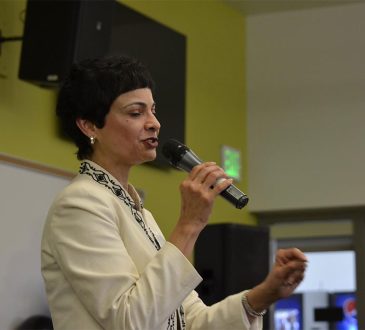Your Guide To Open Innovation

Simply put, innovation is the creation of a viable offering. Its value construct requires identifying the problems that matter and moving through them systematically to deliver elegant solutions. Innovation is seen and felt not only at the product or services level but in the firm’s supply chain, processes, and its ability to promote learning and transfer of knowledge. The increasingly global nature of business forces, ultimately facilitates innovation providing that firms can sense, adapt, reconfigure and transform in a timely manner.
At its core, innovation occurs within three broad areas:
- At the “Configuration” level which are focused on business delivery, structures, profit model network and internal processes
- At the “Offering” level, focused primarily on its product system and product performance
- At the “Experience” level, focused on customer engagements, channels, brand and personalisation.
For instance, when innovation takes place at a process level, it usually contains tacitness and complexity (in other words, a fair amount of causal ambiguity) then, the simple attempt to imitate it externally is usually futile.
Innovation is the backbone of the modern world. Beyond a new product, service, or idea, innovation, as we know it today, is a lifestyle. From a business perspective, innovation helps a firm stand out from its competitors. This enables them to thrive in the business world.
Open innovation takes this a step further. It combines internal and external ideas as well as internal and external paths to market, to advance the development of new technologies. Research from the Stockholm school of Economics found that the largest firms implement organizational modes of open innovation on average 1.5 times more than the medium-sized and the smallest ones.
Certain vehicles such as corporate venture capital, talent on-demand, incubators and accelerators are more conducive to open innovation than others. This living concept solves problems by developing solutions following a deep analysis of the state of a company.
Open innovation involves knowledge ecosystems, business ecosystems and bilateral collaboration. To succeed innovatively, there are elements that merit the consideration of major decision-makers:
- The evolution company’s goals and ambitions.
- What type of existing problems need to be solved?
- What are the gaps that need to be filled, from a staffing or capabilities’ perspective?
- Whether external input, such as executive leadership, is necessary indefinitely or on an as-needed basis.
Furthermore, open innovation could be the medium through which companies reach their end goals. Through it, they combine internal and external sources. Successful companies that prioritize strategic open innovation in their operations include Samsung, Facebook, Lego, Philips, and many more.
Inbound vs Outbound Innovation
Inbound and outbound innovation are both facets of open innovation. The former refers to acquiring expertise from outside sources. The latter indicates repurposing innovation that is not in use within an organization. This is achieved by promoting an outbound flow of information and resources, such as by means of a joint venture.
Jennifer Van der Meer describes Dutch firms as reluctant to take part in the use of exporting mechanisms (i.e. outbound practices), with only 54% highly innovative companies using them vs. 74% adopting importing mechanisms (i.e. inbound practices). Further research found that, generally, open innovation seems to be a complement to internal R&D but that an increased use of inbound activities is employed as a substitute for internal R&D. Hence, inbound open innovation activities can reduce the R&D intensity of a company.
The Shift From Closed Innovation to Open Innovation. Mutually exclusive?
Many consider closed innovation as an antiquated way of doing business. In effect, it is a system that is insistent upon one way of achieving objectives. Generally speaking, the consensus was that a business should hoard the best staff and resources. Backed by their own research and development efforts, they would have the key to success.
The traditional mindset fostered by closed innovation practices is intended on protecting crucial information and intellectual property solely for securing an advantage over competitors.
On the contrary, open innovation invites outside sources to join in research and development initiatives. In this model, there is a trade of expertise and collaboration for mutual benefit.
But are these two models, or principles, mutually exclusive? Of course not.
Open innovation should be the preferred vehicle to competitive advantage but not in isolation. Closed innovation has its place, especially when technologies are closely linked and integrated at the product level (Apple) or when closed innovation produces a clear and fundamental advantage over competitors.
Research from the University of Oxford by D. Gann argues that it is not true that “the more openness, the better” since it can be costly and it is not always easy to have a high degree of openness. Indeed, the approach chosen by companies should depend on its coherence with the strategic, organizational and managerial contexts and on an acceptable balance between the benefits and costs.
Open innovation is not a replacement for closed innovation but should rather be regarded as complementary. Businesses that combine these two principles, and have the internal structures to support such moves, are better positioned to deliver outcomes in a rapidly changing environment.
Open Innovation and Experts
The outlook on freelancers has shifted substantially from viewing them as inexpensive labour to highly sought-after professionals in their craft. Organisations need specialists in their field. Masters that can bring fresh perspectives and solutions to the table.
Consulting marketplaces such as Cognisium connect businesses with independent freelancers and even provides a preview of the skills they offer before registration. These experts in open innovation offer corporate experience, mastery of financial concepts, exceptional project management skills, and technological dexterity.
Successfully Implement a Blended Workforce Strategy
Merging existing teams with new players brought on to aid the development of a firm can be a challenge. It is crucial to reassure the current staff that the addition of fractional staff is not a reflection of lack of meaningful contribution.
The introduction of such freelance associates should not be used to threaten or discourage existing staff. In this way, freelance experts, whether executives, creatives, analysts, or others, remain a part of existing ongoing projects and continue to contribute meaningfully.
A firm’s personnel should feel that they are being invited to take part in tapping into a prime resource. The full time employee value proposition needs to change. Here, the leadership’s role in explaining a) the new competitive landscape and b) what is expected from the employee of the future, are both crucial.
The core employee value proposition will entail a re-envisioning of their role in the company. They will become enablers of specialised work, and connectors of work packages and initiatives to deliver more scalable and profitable results. As a result, a cultural shift will also need to take place so that the incoming on-demand experts be viewed not as a threat but as part of a blended workforce strategy geared for optimum quality and delivery.
Written by Dr. Dorel Iosif.
Have you read?
# Best Citizenship and Residency by Investment Programs.
# Richest People in New York and Their Net Worth, 2022.
# The World’s Top 10 CEOs Over 70 Years Old.
# These are the world’s most and least powerful passports, 2022.
Add CEOWORLD magazine to your Google News feed.
Follow CEOWORLD magazine headlines on: Google News, LinkedIn, Twitter, and Facebook.
This report/news/ranking/statistics has been prepared only for general guidance on matters of interest and does not constitute professional advice. You should not act upon the information contained in this publication without obtaining specific professional advice. No representation or warranty (express or implied) is given as to the accuracy or completeness of the information contained in this publication, and, to the extent permitted by law, CEOWORLD magazine does not accept or assume any liability, responsibility or duty of care for any consequences of you or anyone else acting, or refraining to act, in reliance on the information contained in this publication or for any decision based on it.
Copyright 2024 The CEOWORLD magazine. All rights reserved. This material (and any extract from it) must not be copied, redistributed or placed on any website, without CEOWORLD magazine' prior written consent. For media queries, please contact: info@ceoworld.biz
SUBSCRIBE NEWSLETTER








